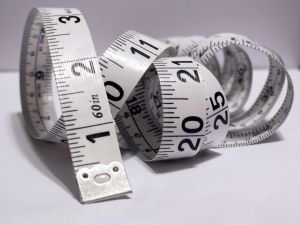Recommended
- Dr Fuhrman
- Vegan DHA
- iHerb (Great for ordering supplements, even if you're not in the US. Get $10 off your first order of $40 or more, or $5 off smaller orders, if you use coupon code GUH019)
How much should you weigh?

If you want to lose weight, it helps to have certain milestones. For me, BMI (see below) was important. Reaching a BMI of 29.9 meant I no longer was obese. Getting to 24.9 meant I had reached a healthy weight. I was quite disappointed that I still felt very fat at that weight. At that point I stopped thinking about having a target weight, and I just continued with healthy eating and being active.
There are several methods to determine if you are at a healthy weight. I now think that weight milestones are useful for some people, but you should not take those methods too seriously. I think most people know when they are at a healthy weight, just by looking honestly in the mirror; but if you like to measure and track your progress, here are the current ways to determine healthy body weight:
BMI: Body Mass Index
BMI is probably the worst, but still the most popular way to determine healthy bodyweight. The formula is as follows: weight in kilograms / (length in meters * length in meters). You can calculate your BMI in the caloric needs calculator.
Different organizations vary somewhat in the boundaries for healthy weight. Usually a BMI between 18.5 and 25 is considered a healthy weight, but some experts, like Harvard's Walter Willett say BMI gives a too optimistic view of health: a BMI of 24.5 can still mean a considerable health risk.
There are a couple of problems with the BMI:
- It does not differ between fat and muscle. Very muscular people will have a high BMI, even though they are very healthy.
- It does not differ between belly fat and fat on other places. It is now known that especially fat around the waist is an indicator for disease. People can have a BMI of 22, but still have too much fat around the waist.
Waist Circumference
A better indicator than BMI is the waist circumference. Just measure your waist at the smallest point and you're done. Waist circumference for women should be less than 31 inches, for men it should be less than 37 (some websites say 35 and 40. They are way too optimistic.). A problem with this method is that it can be hard to determine how tightly to put the measuring tape and results can vary greatly throughout the day. I tend to be smallest in the morning. My waist circumference is somewhere between 69 and 76 cm (between 27 and 30 inches)
Waist to Hip ratio
Apparently waist circumference alone was too simple, so researchers developed yet another method to find out ideal weight: the waist to hip ratio. Divide your waist circumference through your hip circumference. For men, this number should be under 0.9. For women it should be under 0.8. Some research indicates waist-to-hip ratio is better in predicting disease than waist circumference alone, other research indicates the opposite.
Pinch belly fat
Dr. Fuhrman gives the easiest method of all in Eat to Live: a man should not have more than one-half inch of skin that he can pinch near his belly button and a woman should not have more than one inch.
If you like to keep track of your progress, now you know what to measure. However, please remember that everybody is different and that you know your body better than some formula. Focus on healthy eating and being active, not on a scale or measuring tape. Instead of weight milestones, you can also set health milestones like: being able to take the stairs to the fourth floor without getting exhausted.
April 10, 2006